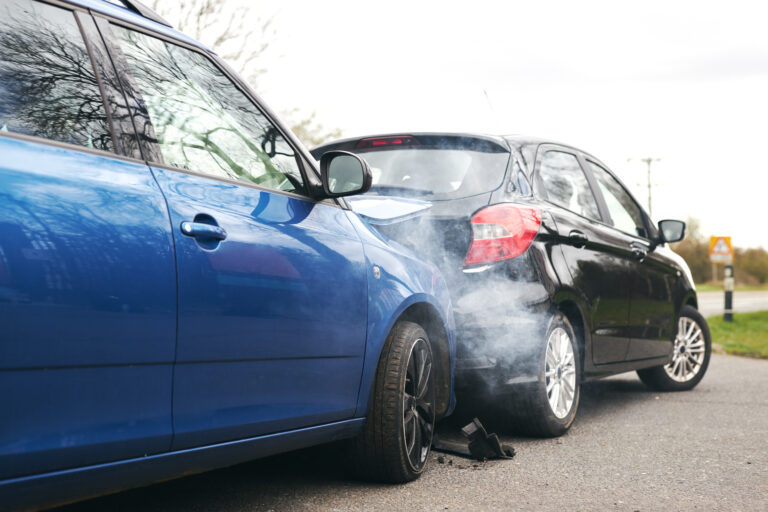Sometimes the line gets blurry, but make no mistake, true road rage goes way car accident laywer beyond mere frustration or aggressive driving. It’s intentional, it’s dangerous, and it can turn a simple commute into a nightmare. We’re talking about specific, nasty behaviors that put people in danger.
Think your experience might qualify? If someone’s dangerous driving turned into a personal attack that left you injured or your car mangled, let’s talk.
Call Walner Law Firm at (312) 410-8496 to figure out your next steps.
What Separates Road Rage from Just Plain Bad Driving?

It’s easy to throw around the term “road rage” when someone acts like a moron on the highway. But legally speaking, there’s a difference between garden-variety aggressive driving and actual road rage. Aggressive driving is usually about traffic violations – speeding, unsafe lane changes, tailgating because someone’s impatient or just not paying attention. Think of it as selfish, risky driving.
Road rage, however, cranks it up a notch. It’s when anger behind the wheel turns into intentional, often criminal behavior aimed at another person. The driver isn’t just trying to get somewhere faster; they’re actively trying to intimidate, threaten, or even harm someone else because of a perceived slight on the road. It’s personal.
While Illinois doesn’t have one specific statute titled “Road Rage,” the behaviors absolutely fall under existing laws. The closest definition aligns with reckless driving. According to the Illinois Vehicle Code (625 ILCS 5/11-503), reckless driving involves operating a vehicle with a “willful or wanton disregard for the safety of persons or property.” This isn’t just carelessness; it implies the driver knew, or should have known, their actions were dangerous. Specific road rage actions can also lead to charges like assault, battery, or even criminal damage to property, depending on what goes down. The key difference? Intent. Aggressive driving is breaking traffic rules. Road rage is using the road—and often the vehicle itself—as a stage for aggression or violence.
3 Examples of Road Rage
Example 1: Turning Your Car Into a Battering Ram (Using the Vehicle as a Weapon)
Some drivers let their anger completely hijack their common sense, turning several thousand pounds of metal into an instrument of intimidation or outright attack. This isn’t just aggressive tailgating or accidentally bumping someone in stop-and-go traffic. This is deliberate, malicious action using the vehicle itself.
Think about these scenarios:
- Intentional Ramming: Literally bumping or smashing into another car on purpose out of anger.
- Sideswiping: Veering into another lane specifically to hit the side of another car.
- Aggressive Brake-Checking: Slamming on the brakes not just to deter a tailgater, but with the clear intent to cause a collision or severe fright.
- Running Someone Off the Road: Intentionally maneuvering to force another driver off the pavement and into a ditch, shoulder, or oncoming traffic.
This type of behavior blows past simple traffic offenses. In Illinois, these actions move squarely into the realm of serious criminal charges.
- Reckless Driving (625 ILCS 5/11-503): At a minimum, this applies. If the act causes great bodily harm or permanent disability/disfigurement, it becomes Aggravated Reckless Driving, a Class 4 felony (or Class 3 if the victim is a child or on-duty school crossing guard).
- Criminal Damage to Property (720 ILCS 5/21-1): Intentionally damaging someone else’s vehicle fits this bill. Penalties vary based on the cost of the damage, escalating to felony charges for significant damage.
- Assault/Aggravated Assault (720 ILCS 5/12-1, 5/12-2): Using a vehicle to make someone fear an imminent battery (physical harm) constitutes assault. Since a vehicle can be considered a deadly weapon in this context, it often escalates to Aggravated Assault, a Class A misdemeanor or potentially a felony depending on circumstances.
- Battery/Aggravated Battery (720 ILCS 5/12-3, 5/12-4): If the intentional vehicle contact causes bodily harm, it’s battery (Class A misdemeanor). If it causes great bodily harm, permanent disability, or uses the vehicle as a deadly weapon resulting in injury, it becomes Aggravated Battery, a serious felony (potentially Class 3, 2, or even X depending on severity and specifics).
Beyond the criminal courthouse, using a vehicle as a weapon opens the door wide for a civil lawsuit. The victim can sue for property damage repairs/replacement, medical bills, lost income, and significant compensation for pain, suffering, and emotional distress caused by such a terrifying event.
Example 2: Roadside Rumbles and Raised Voices (Confrontation and Threats)
Sometimes, the rage doesn’t stay contained within the cars. The perceived offense is so great in the aggressor’s mind that they feel compelled to escalate the situation face-to-face, turning a traffic dispute into a potentially volatile personal confrontation. This is where things can get really ugly, really fast.
Here’s what this looks like:
- Aggressive Following: Tailgating someone menacingly not just for a moment, but pursuing them, possibly flashing lights or honking continuously.
- Blocking/Trapping: Using their vehicle to prevent yours from moving, maybe cutting you off and stopping, or boxing you in at a light or stop sign.
- Exiting the Vehicle: Getting out of their car at a light, in traffic, or even after following someone, to approach the other driver’s vehicle.
- Verbal Assault: Yelling insults, threats of violence (“I’m going to kill you!”), or abusive language directly at the other driver or passengers.
- Intimidation Tactics: Pounding on windows, trying to open doors, making aggressive gestures.
- Brandishing Weapons: Displaying a weapon (firearm, knife, bat, tire iron, even a fist in a threatening manner) to cause fear.
This shift from driving behavior to direct confrontation triggers a different set of laws in Illinois, focusing on interpersonal threats and violence:
- Assault (720 ILCS 5/12-1): This is a key charge here. If someone’s actions put you in reasonable apprehension (fear) of receiving a battery (being physically harmed or touched offensively), that’s assault. Yelling credible threats, advancing menacingly, or brandishing a weapon clearly fits. Assault is typically a Class C misdemeanor.
- Aggravated Assault (720 ILCS 5/12-2): Assault becomes aggravated under certain conditions common in road rage confrontations: occurring on a public way, using a deadly weapon (which includes firearms but could potentially apply to other objects depending on use), or if the victim is over 60 or has a physical disability. Aggravated assault is often a Class A misdemeanor, but can be a felony in specific cases (like discharging a firearm).
- Battery (720 ILCS 5/12-3): If the confrontation turns physical – any intentional, unjustified physical contact that causes harm or is insulting/provoking (like spitting, poking, pushing, or punching) – it’s battery, a Class A misdemeanor.
- Aggravated Battery (720 ILCS 5/12-4): Battery becomes aggravated if it causes great bodily harm, permanent disability/disfigurement, involves a deadly weapon, or occurs on a public way. This elevates the charge to a felony (Class 3, 2, or 1 depending on specifics).
- Disorderly Conduct (720 ILCS 5/26-1): Engaging in behavior that knowingly alarms or disturbs another and provokes a breach of the peace can fall under this statute. Aggressive public confrontations often qualify. This is usually a Class C misdemeanor, but can be elevated if a false report (like a bomb threat) is involved.
Again, beyond criminal penalties, a victim subjected to roadside threats and confrontations has strong grounds for a civil lawsuit. They can seek damages for assault (the fear and emotional distress caused), battery (if physical contact occurred), intentional infliction of emotional distress, and any related tangible costs.
Example 3: Playing Cat and Mouse (Deliberate Obstruction and Stalking)
Not all road rage involves explosions of anger or physical attacks. Sometimes, it’s a calculated, terrifying game of control and intimidation. This type of road rage focuses on trapping, controlling, or frightening another driver through sustained, deliberate actions. It’s less about immediate violence and more about psychological torment and creating a dangerous situation through manipulation.
Consider these examples:
- Boxing In: Strategically positioning a vehicle (sometimes with an accomplice) to prevent another car from changing lanes, turning, or exiting the highway.
- Preventing Escape: Actively blocking a driver trying to pull over, turn off, or get away from the aggressor.
- Persistent Following: Going beyond simple tailgating to actively pursuing a driver for an extended distance, possibly through multiple turns or even to their home or workplace.
- Electronic Harassment (Post-Incident): If the aggressor identifies the victim or vehicle later (maybe through social media or finding their address), continued harassment or threats related to the initial road incident could occur.
This type of behavior, while perhaps less overtly violent than ramming or physical assault, carries its own legal weight in Illinois:
- Reckless Driving (625 ILCS 5/11-503): Intentionally obstructing traffic, boxing someone in, or engaging in dangerous pursuit clearly demonstrates a willful disregard for safety. This remains a foundational charge.
- Disorderly Conduct (720 ILCS 5/26-1): Actions designed to unreasonably alarm or disturb another, like persistent following or trapping, can qualify.
- Stalking (720 ILCS 5/12-7.3): This is where prolonged pursuit becomes particularly serious. Illinois law defines stalking as knowingly engaging in a course of conduct (two or more acts) directed at a specific person that the aggressor knows or should know would cause a reasonable person to fear for their safety or suffer other emotional distress. Following someone, monitoring them, or showing up at their location repeatedly can constitute stalking. Stalking is a Class 4 felony for a first offense, and a Class 3 felony for subsequent offenses. If the stalking violates an order of protection or involves specific threats, it can become Aggravated Stalking (Class 3 or 2 felony).
- False Imprisonment (720 ILCS 5/10-3): While potentially harder to prove with vehicles, knowingly and unlawfully restraining another person so as to interfere substantially with their liberty (like physically boxing them in so they cannot leave) could potentially fit this definition, which is a Class A misdemeanor.
On the civil side, victims of these terrifying “cat and mouse” games can sue for intentional infliction of emotional distress, which requires proving extreme and outrageous conduct causing severe emotional suffering. If the stalking behavior is proven, damages related to the fear and disruption it caused are also recoverable. If these tactics lead to an accident (e.g., the victim crashes while trying to evade the aggressor), the aggressor can be held liable for all resulting damages.
The Fallout: What Happens Legally After Road Rage?

These examples paint a grim picture, and the consequences under Illinois law reflect the seriousness of these actions. Road rage isn’t just bad manners; it can lead to significant legal trouble on two main fronts: criminal and civil.
Criminal Consequences:
When a road rage incident involves actions defined as crimes (like reckless driving, assault, battery, stalking, etc.), the state can press charges.
- Charges & Penalties: Depending on the specific actions and resulting harm, penalties range from misdemeanors (fines up to $2,500, up to a year in county jail per offense for Class A misdemeanors like simple battery or reckless driving) to serious felonies. Aggravated battery or reckless driving causing great bodily harm can lead to prison sentences (e.g., Class 4 felonies generally carry 1-3 years, Class 3 carry 2-5 years, Class 2 carry 3-7 years, Class X felonies have much longer minimums).
- License Suspension/Revocation: Convictions for offenses like reckless driving can lead to the Secretary of State suspending or revoking driving privileges. Some proposed (though not currently enacted) legislation specifically sought mandatory revocation for “road rage” convictions.
- Criminal Record: Convictions create a permanent criminal record, impacting employment, housing, and other aspects of life.
- Burden of Proof: In criminal court, the state must prove guilt “beyond a reasonable doubt,” a high standard.
Civil Consequences:
Separate from any criminal charges, the victim of road rage can file a civil lawsuit against the aggressor to seek monetary compensation for the harm suffered.
- Damages Sought: Victims can sue for:
- Property Damage: Cost to repair or replace their vehicle.
- Medical Expenses: Bills for doctors, hospitals, therapy, medication, etc.
- Lost Wages: Income lost due to being unable to work during recovery.
- Pain and Suffering: Compensation for physical pain, emotional distress, fear, anxiety, and loss of enjoyment of life.
- Punitive Damages: In egregious cases showing willful and wanton misconduct, Illinois law allows for punitive damages. These aren’t to compensate the victim but to punish the wrongdoer and deter similar future behavior. There are specific legal standards to meet for punitive damages.
- Burden of Proof: In civil court, the victim (plaintiff) only needs to prove their case by a “preponderance of the evidence,” meaning it’s more likely than not that the defendant’s actions caused their damages. This is a lower standard than in criminal court. A criminal conviction can strengthen a civil case, but isn’t necessary to win one.
Don’t Let Rage Win – Reclaim Your Right to Recovery
Whether it was a threatening gesture that turned into a terrifying chase, a deliberate sideswipe, or a confrontation that left you injured, the consequences personal injury attorney are real. You shouldn’t have to bear the burden of medical bills, car repairs, and lost time because another driver couldn’t control their temper.
Call Walner Law Firm today at (312) 410-8496 for a conversation about your case.


 Skip to content
Skip to content




